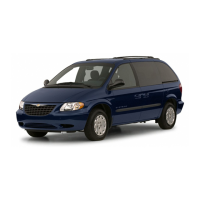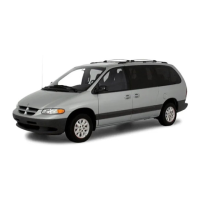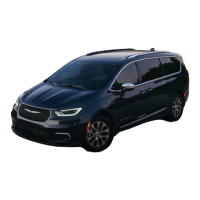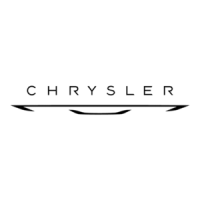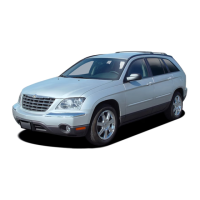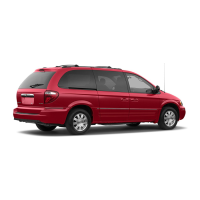•
Some vehicles require special tools to add coolant
properly. Failure to fill these systems properly could
lead to severe internal engine damage. If any cool-
ant is needed to be added to the system, please
contact an authorized dealer.
•
Mixing engine coolant types is not recommended
and can result in cooling system damage. If HOAT
and OAT coolant are mixed in an emergency, have
an authorized dealer drain, flush, and refill with OAT
coolant (conforming to MS.90032) as soon as
possible.
Cooling System Pressure Cap
The cap must be fully tightened to prevent loss of
engine coolant (antifreeze), and to ensure that engine
coolant will return to the radiator from the coolant
expansion bottle/recovery tank (if equipped).
The cap should be inspected and cleaned if there is any
accumulation of foreign material on the sealing
surfaces.
WARNING!
•
Do not open hot engine cooling system. Never add
engine coolant (antifreeze) when the engine is
overheated. Do not loosen or remove the cap to
cool an overheated engine. Heat causes pressure
to build-up in the cooling system. To prevent scald-
ing or injury, do not remove the pressure cap while
the system is hot or under pressure.
•
Do not use a pressure cap other than the one
specified for your vehicle. Personal injury or engine
damage may result.
Disposal Of Used Coolant
Used ethylene glycol-based coolant (antifreeze) is a
regulated substance requiring proper disposal. Check
with your local authorities to determine the disposal
rules for your community. To prevent ingestion by ani-
mals or children, do not store ethylene glycol-based
coolant in open containers or allow it to remain in
puddles on the ground. If ingested by a child or pet,
seek emergency assistance immediately. Clean up any
ground spills immediately.
Coolant Level
The coolant expansion bottle provides a quick visual
method for determining that the coolant level is
adequate. With the engine off and cold, the level of the
coolant (antifreeze) in the bottle should be between the
“MAX” and “MIN” lines marked on the bottle.
As long as the engine operating temperature is satisfac-
tory, the coolant bottle need only be checked once a
month.
When additional coolant is needed to maintain the
proper level, it should be added to the coolant bottle.
Do not overfill.
See an authorized dealer for service.
Cooling System Notes
NOTE:
When the vehicle is stopped after a few miles/
kilometers of operation, you may observe vapor coming
from the front of the engine compartment. This is nor-
mally a result of moisture from rain, snow, or high
humidity accumulating on the radiator and being vapor-
ized when the thermostat opens, allowing hot engine
coolant (antifreeze) to enter the radiator.
If an examination of your engine compartment shows
no evidence of radiator or hose leaks, the vehicle may
be safely driven. The vapor will soon dissipate.
•
Do not overfill the coolant expansion bottle.
•
Check the coolant freeze point in the radiator and in
the coolant expansion bottle. If engine coolant
needs to be added, the contents of the coolant
expansion bottle must also be protected against
freezing.
•
If frequent engine coolant additions are required,
the cooling system should be pressure tested for
leaks.
•
Maintain engine coolant concentration at a mini-
mum of 50% OAT coolant (conforming to MS.90032)
and distilled water for proper corrosion protection of
your engine which contains aluminum components.
•
Make sure that the coolant expansion bottle over-
flow hoses are not kinked or obstructed.
•
Keep the front of the radiator clean. If your vehicle is
equipped with air conditioning, keep the front of the
condenser clean.
•
Do not change the thermostat for Summer or Winter
operation. If replacement is ever necessary, install
ONLY the correct type thermostat. Other designs
may result in unsatisfactory engine cooling perfor-
mance, poor gas mileage, and increased emissions.
196 SERVICING AND MAINTENANCE

